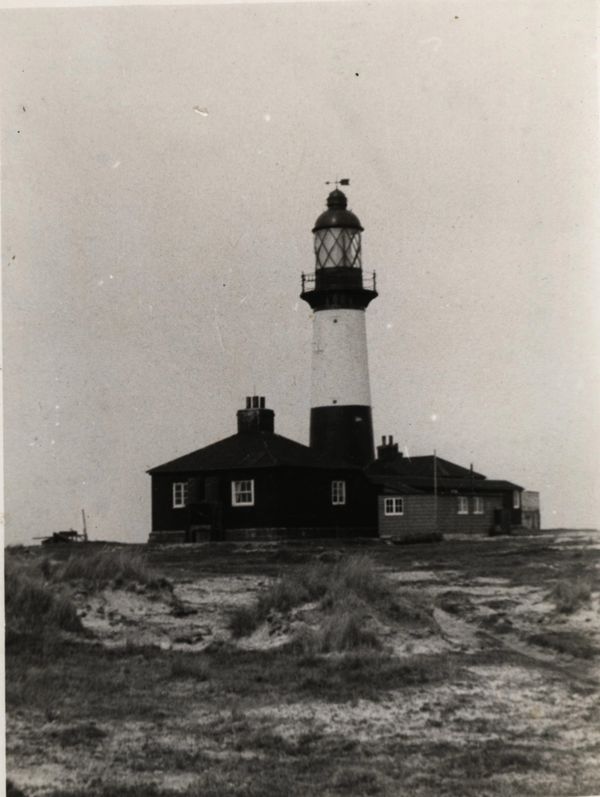Cape Pembroke Lighthouse
We have news!
Cape Pembroke Lighthouse restoration project due to start soon
The Falkland Islands Museum & National Trust (FIMNT) is currently engaged in a series of impactful initiatives. One of these significant undertakings is the Cape Pembroke Lighthouse Restoration Project, generously funded by Beauchene Fishing Co Ltd, Consolidated Fisheries Ltd, the Falkland Islands Government, and not forgetting Stanley Services Ltd, who are providing essential paint supplies.
This restoration project, coordinated by the FIMNT and led by ICC Commonwealth, lighthouse specialists hailing from New York State, is set to commence later this year. Local contractors, including Richard Short, Paul Ellis, and Jamel Adeoye, will collaborate on this restoration project, which is projected to last up to two years. The road, which was funded by FIG, was laid in April 2024 by Peaks Haulage Ltd.
The restoration project will include removing part of the concrete slab inside the lighthouse; stitching the cracks; removing the lantern; blasting and repairing the lantern room and dome; and blasting, treating, and painting the exterior of the lighthouse.

Cape Pembroke is the most easterly point of the Falkland Islands and lies just over 7 miles due east of Stanley. It is thought to have been named in the eighteenth century after Thomas, Earl of Pembroke and Montgomery, Lord High Admiral from 1690 to 1709.
In the 1840s the first navigational aid was erected on Cape Pembroke in the form of a wooden marker post painted red and white. This was replaced in 1854 by a cast-iron lighthouse, pre-fabricated in London by William Wilkins of Long Acre. The tower was 60 feet high, painted in red and white bands. The light was produced by 18 lamps burning rape-seed oil, which were lit for the first time in December 1855. The illuminating apparatus was first catoptric (reflecting) and the fixed light showed in every direction seaward, visible for 14 miles in clear conditions. It came under the jurisdiction of Trinity House in London.
In 1889 the tower was painted white overall as the strong sunlight had caused the red bands to fade. Then in 1904 Governor Allardyce reported to the Colonial Office that he had inspected the foundations of the lighthouse and found the original wooden piles to have become quite rotten through damp. He said that the brick and cement base had cracked and that he considered the structure to be unsafe. In view of this, a decision was taken in 1905 to re-build the lighthouse on new foundations.
Work began on this project in 1906. It was a major undertaking, involving some 700 tons of new materials, a Trinity House supervisor and four contractors from Britain and a team of local men. A lightship light was placed on the peninsula while work was in progress. The re-erected tower was positioned about 200 yards to the west of the original site and a new lantern was placed on top, making the lighthouse 70 feet high from base to weather vane.
The re-built light was finally illuminated again in June 1907. The original system had been replaced by a dioptric (refracting) 3rd order apparatus, lit by paraffin lamps. Mounted on a stand which revolved by clockwork, it showed a flashing light instead of a fixed one and was visible for 16 miles in clear weather. The tower was painted black with a broad white band.
The lighthouse was put out of operation after the Argentine invasion in April 1982. Today, a ground-mounted solar-powered unit erected by the Fisheries Department in 1987 serves as a navigational aid on Cape Pembroke.
In 1990 proposals were put forward for the restoration of the lighthouse by Jane Cameron, the then Government Archivist. This work was supported by a Historic Buildings Fund and local charities.


This picture was found inside the lighthouse and we love it! If you recognise it please let us know



Falkland Islands Museum & National Trust
Historic Dockyard Museum - Stanley - Falkland Islands
This website uses cookies.
We use cookies to analyze website traffic and optimize your website experience. By accepting our use of cookies, your data will be aggregated with all other user data. Privacy Policy
